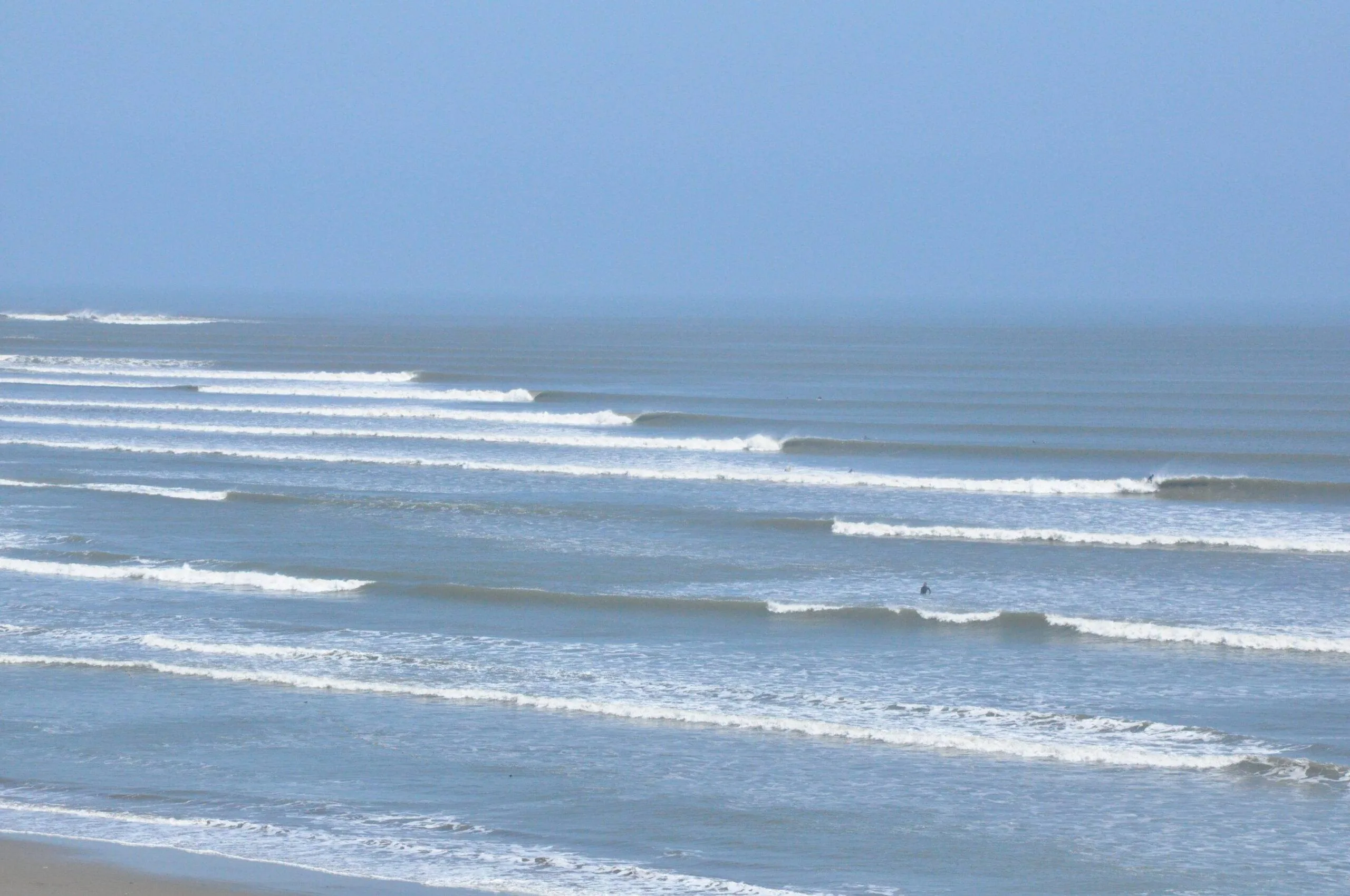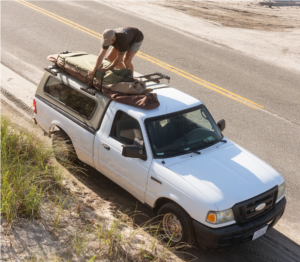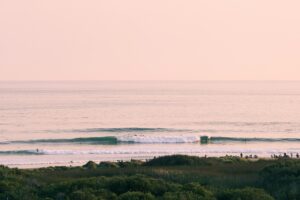Peru is one of the best surf destinations in South America! A huge country with thousands of Kilometres of coastline. Most of it is wave-rich, with countless left-hand pointbreaks. You’ve got the surf, and then outside the water any number of awesome things to see and do. In this article, we dive into everything you need to know for surfing in Peru. from where to surf, how to get around, where to stay, and the typical costs involved with a surf trip to this South American gem.
Overview
- Consistency
- World class waves
- Wave variety
- Crowds
- Distances between spots
Table of Contents
Best Time of Year to Surf in Peru
Peru can have fun waves all year. However, the best season is between April and October. This is when large south swells from the Pacific hit the Peruvian coastline and light up those famous left points. Although this is the best time of year for surfing in Peru, these same swells bring the Humboldt current, which means cool water, and grey skies. Pumping left points come with a price tag, right?

Peru Water Temps
In winter, you’ll be able to surf through most of the country in a 3/2mm. But because the coast is so long, it depends on where you are. In the North, you can almost surf in boardies even during winter, whereas down south, (Lima southward), you’ll need a 4/3mm and even booties, if you’re a wuss like me. In summer, the North is boardies, whereas, down South, 3/2mm or shortie will do.
Best Surf Spots in Peru
There are countless surf spots across Peru, but for the sake of this post, let’s focus on the best and most well-established surf destinations.
Mancora
Arguably the capital of surfing in Peru. The lively town of Mancora is home to several epic left-hand points. It’s warm year-round as the place is in the very far north of the country. The left in town is a fun rippable wall, whereas, around the coast, there are some other options to explore. The town is home to Lucas Messinas, one of the best surfers to come out of Peru and the first male Pervuvian to qualify for the Championship Tour.
Lobitos
To the south of Mancora, you’ve got the sleepy beachside town of Lobitos. There’s not much going on in Lobitos, but if you’re after somewhere to just surf and do nothing else, it’s a dream. The main wave (just outside of town) is a super fun sand-bottom left point, breaking off a suck rock and then doubling up beautifully down the point, it’s a sick wave for turns and suitable for surfers of all abilities. Read more about surfing in Lobitos here.

Chicama
The most famous wave in Peru. Chicama is regarded as the world’s longest left and is rivaled only by Skeleton Bay in Namibia. A crazily long left and you can even ride waves here for up to 2 minutes. (I had a sick time in Chicama – check out my full video here). At the top is the Keys section–the most exposed and consistent point.
But the creme of the crop of the Chicama points is the El Point section, the first, longest, and best section of the wave, which when the swells up produces incredibly long, endless lefts, that warp and wrap and bend along from the top to town! Here’s the full breakdown of everything you need to know about surfing in Chicama.
Huanchaco
Just outside the town of Trujillo (the closest large town to Chicama) is another super fun and long left (you can see the theme here right) Breaking over cobbles and backed by a large town and a scattering of surf hostels overlooking the waves, this is another good spot to check out if you want to go left and surf with minimal crowds.
Lima
Lima, while a cosmopolitan city that could rival anywhere in North America or Europe is also a fantastic place to be a surfer. Around the coast, there are several left points which are let’s say, interesting, but I’ll let you find them for yourself though. In the Miraflores area of the city, you’ll find a series of rock jetties and stony beaches, all with fun peaks breaking between them.
Huge black/green cliffs and modern buildings provide an excellent backdrop and a truly unique surfing experience. Lima is also a wicked place to be a surfing digital nomad with hundreds of cafes, hostels, and co-workspaces to get stuck into work between surf sessions.
Punta Hermosa
If high-performance surfing is what you’re after in Peru. Check out Punta Hermosa. An a-frame point with a predominant right. Punchy walls to rip into, epic for progressing intermediate and advanced surfers. Punta Hermosa also hosts the annual and only QS event in the country.
Beginner Surf Spots in Peru
If you’re learning how to surf, most of the major surf towns across the country will have somewhere suitable. Under the right guidance and conditions, many beach breaks and points have inside sections that can be great for learning. However, the best set-up I saw for learning how to surf in Peru was Miraflores. Although the beach is rocky, there are many surf schools with all the coaches and equipment you need, and there are always lines of whitewater for learning.

Tips for Surfing in Peru
Crowds
The most established surf spots throughout Peru, are super crowded, Lobitos, Chicama, and the waves around Lima, are all popular, so like anywhere, just respect the locals and navigate the lineup as best as possible.
Weather
During winter, the mornings of coastal Peru are often shrouded in grey mist, which makes this look and feel dull. This is because of the Humboldt current that brings cool water and weather from the South Pacific. Usually, this burns off in the afternoon and the sun comes out again.
How to Get to Peru?
You can fly to any major city in Peru from overseas. If you fly into Lima you can then jump onto a domestic flight to your surf town of choice. For Mancora, and Lobitos, fly to Mancora or Talara. And for Chicama and Huanchaco, fly to Trujillo. Otherwise, Lima is a great jumping-off point to surf and explore the other Peruvian surf towns. Check out Kayak for cheap flights to Peru.
Getting Around
You can fly affordably around Peru, but if you’re on a budget surf trip, use buses. Peru has an excellent bus system and you’ll find many routes (overnight) between major cities that will cost less than $50. Check out BusBus for the best routes and cheapest fares. Alternatively, you can hire a car for your Peruvian surf trip but know that distances are vast throughout the country, so be prepared to dive and spend a decent amount of fuel. Check out Disocver Cars for the cheapest hire cars in Peru.
Peru Surfing History
In Chas’ Smiths epic read, “Cocaine and Surfing” he speculates that surfing itself could have started in Peru (not Hawaii), with fishermen riding waves in their boats coming in from the morning catch. Peruvians then spread surfing after sailing to the Polynesian islands and bringing surfing with them. How true this is I don’t know, but an interesting concept nonetheless.
Best Surf Camp Packages in Peru
If you want to book your Peruvian surf trip in one easy booking, check out Book Surf Camps, they have some epic surf camp packages throughout Peru including airport transfers, surf coaching, accommodation, and in some cases other excursions and cool activities such as Yoga, strength sessions etc… Check out the best here:
Non-surfing Activities in Peru
Peru is firmly on the itinerary of many backpackers and for good reason. Aside from surfing, Peru has some incredible things to do.
Laguna 69
This was my favorite non-surfing activity in Peru. A stunning hike through the mountains leading to a strikingly blue lake, 4500m above sea level. It’s something straight of a South American dream. It’s a tough hike and you’ll struggle to breathe at the top, but well worth it and an experience I couldn’t recommend highly enough. Learn more about Laguna 69 here.
Machu Picchu
No trip to Peru is complete without a trip to Machu Picchu, one of the wonders of the world and Peru’s most famous attractions. A truly incredible experience and although I found it to be crazy busy, I’m glad I went.

Final Words
Peru is one of the more affordable surf destinations on earth and promises world-class waves (mostly lefts), consistency, a low cost of living, and a whole heap of other things to do. This a must-do surf trip for surfers of any ability! For more information on surfing in Peru, please comment down below with any questions or check out my full video to Chicama, the world’s longest left.




